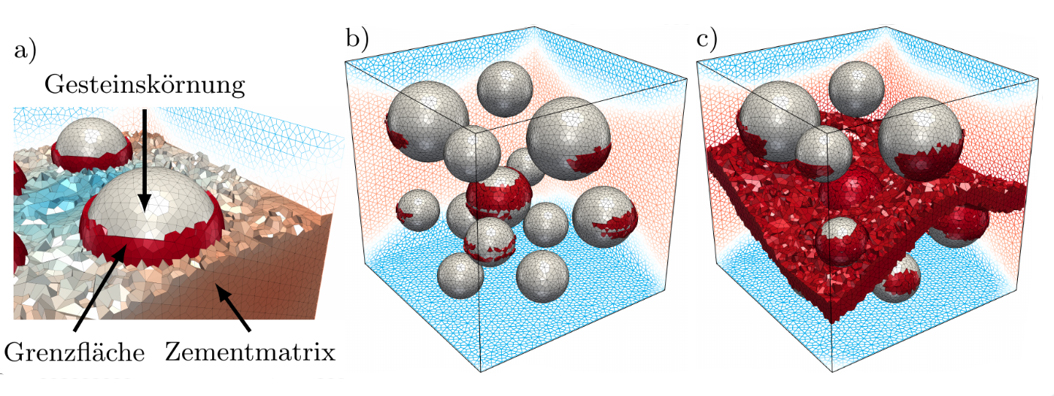
A three-phase model of concrete simulates the damage evolution from the aggregates through the cement matrix.
Source: BAM Department Safety of Stuctures, Division Modelling and Simulation
Concrete is one of the most attractive building materials and is responsible for 5% of global CO2 emissions. The conservation of natural resources is a key challenge for the next decades. This can be achieved by increasing the durability of concrete structures through a robust, lifetime-oriented design. For this purpose, a reliable numerical model for predicting the material behavior of concrete is required.
The presented material model combines a purely elastic material for the concrete aggregates with damage models for both the cement matrix and the interfaces. Thus, the damage evolution can be simulated starting from the aggregate surface through the cement matrix. These damage zones cause a stress redistribution and can reduce stress peaks that are used as design limits in purely elastic simulations, and thus even increase the load limit of the component.
This stress redistribution also influences the damage progress. Classical (implicit) integration methods attempt to calculate both phenomena simultaneously. However, for the presented three-phase model of concrete this leads to instabilities due to a bifurcation problem. The exact resolution of the bifurcation points is numerically complex and requires long calculation times.
In close cooperation with the UPC Barcelona, the IMPL-EX method, which was first developed there, is used in this work to decouple both phenomena. It first extrapolates the damage evolution based on the previous damage states and calculates the stress redistribution in a separate step. This significantly reduces the numerical effort and accelerates the simulations by a factor of 40.
With the developed method, a significantly larger virtual concrete specimen can be simulated in the same time. In future research projects, this can be used to investigate the influence of the aggregate shape or the strength ratio of aggregate to cement matrix on the damage and thus the lifetime.
Implicit explicit integration of gradient enhanced damage models
Thomas Titscher, Jörg F. Unger, J. Oliver
published in the Journal of Engineering Mechanics, Vol. 145, Isuue 7, pages 04019040-1 to 04019040-13, 2019
BAM Department Safety of Stuctures, Division Modelling and Simulation


